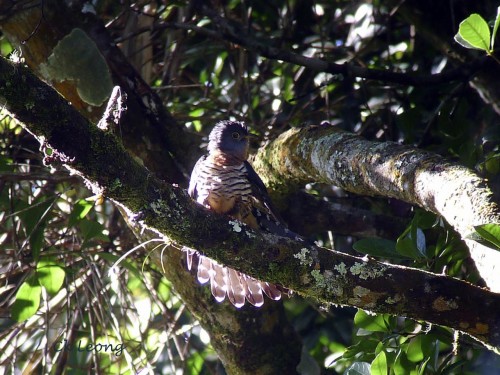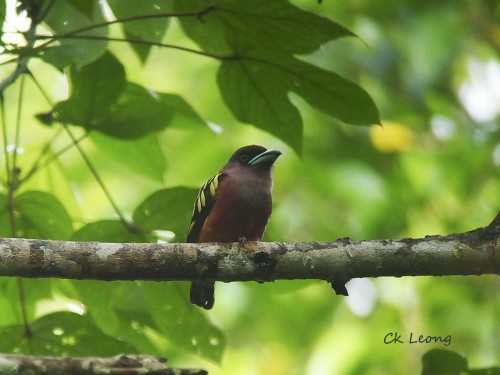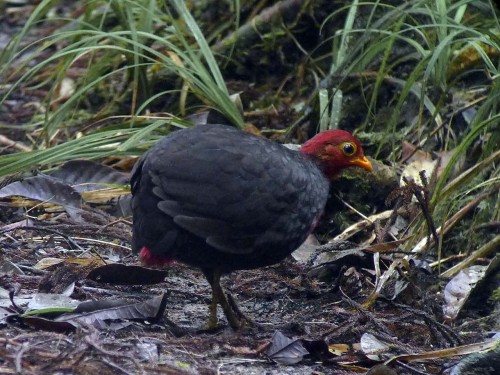Dark Hawk-cuckoo
The Dark Hawk-cuckoo Hierococcyx bocki was previously considered as a race of the Large Hawk-cuckoo. Locally common in hill and montane habitat (Mt. Kinabalu, Rafflesia F.R.), it will be easier to find the bird if you could familiarised yourself with the call, a repeated two note whistle with a longer second note. Enjoy.
 June 14, 2012
|
Posted by CK Leong
June 14, 2012
|
Posted by CK Leong

 Categories:
Categories: 




Recent Comments